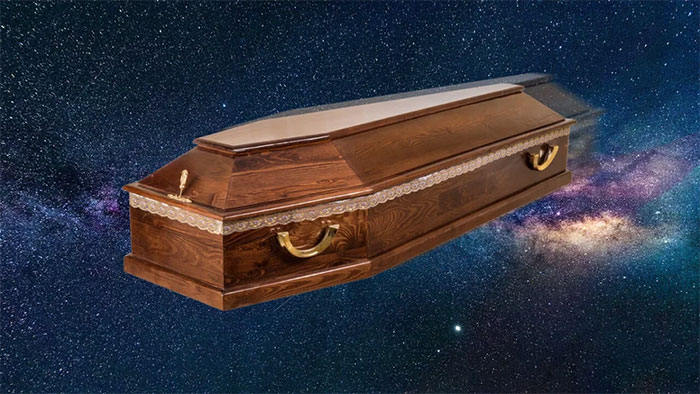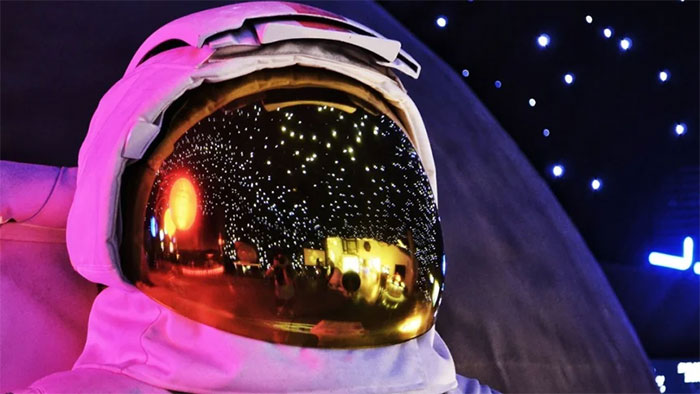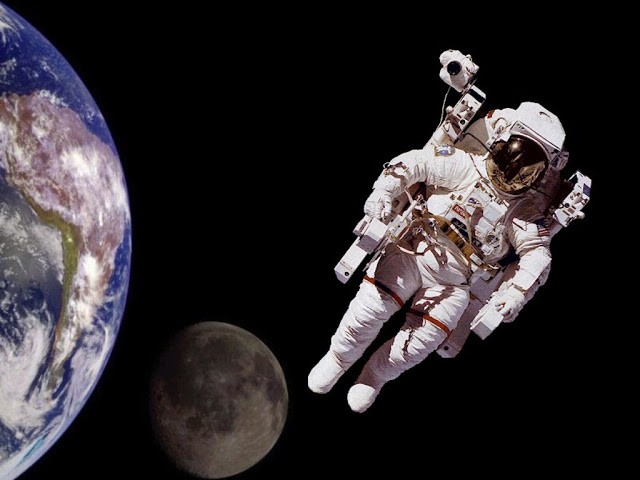With the prospect of popular space tourism in the future, clear procedures must be established to investigate and handle deaths in space.
In the era of space tourism, medical checks can happen quickly, but training processes have many limitations. As ordinary people may fly into space in the future, how will companies handle a situation where someone dies in space?

Clear procedures are needed to investigate and handle bodies in space. (Image: The Next Web).
Determining the Cause of Death
According to international space law, countries are responsible for licensing and overseeing all space activities conducted by their entities, whether governmental or private. In the United States, commercial space tourism flights require a launch license from the Federal Aviation Administration (FAA).
According to The Next Web, if a death occurs during a space tourism flight, determining the cause of death is the first step. If the death is due to a spacecraft technical failure, the FAA will consider suspending subsequent launches by the service provider while an investigation is conducted.
If technical issues are ruled out, the service provider must assess its safety responsibilities and whether it made efforts to prevent the passenger’s death.
Who Will Investigate the Death?
Currently, space tourism trips last from a few minutes to a few days. This means the risk of death in space from natural causes is very low, although not impossible. The process for handling deaths in space needs to be considered as humans participate in longer missions or even settle in space.
Essentially, there will be investigation procedures aimed at determining the cause of death in space. Similar investigations have occurred, such as the 2003 Space Shuttle Columbia disaster, when the NASA spacecraft exploded while re-entering Earth’s atmosphere, resulting in the deaths of seven crew members.

Although space tourism lasts only a few minutes to a few days, deaths on board due to illness or natural causes can still occur. (Image: Hanlire).
However, that investigation was an in-depth examination of a national-level accident, solely related to a U.S. flight. As the space tourism industry expands, deaths from illness or old age, or even fatalities on another planet, will become unavoidable.
According to The Next Web, a clear procedure for investigating deaths during long-term missions and space settlements is necessary to gather clear information about the victims and the reasons for their deaths. This way, agencies and nations can learn from experiences to improve handling.
Investigation procedures can refer to current space law. Accordingly, the country representing the spacecraft has legal authority over the spacecraft and the individuals inside. Thus, that country will initiate an investigation if someone on board dies.
Before departure, signing agreements related to the trip is also essential. Planning for a space mission includes assessing factors such as power supply, food, radiation protection, and waste management. Incorporating handling procedures for potential deaths into the plan can simplify things. Signing agreements before starting the mission is even more critical if passengers come from multiple countries.
Handling Bodies Before Returning to Earth
Beyond legal aspects, space tourism and settlement must consider how to handle deceased individuals. It is crucial to recognize that different cultures have varying practices regarding the dead.
In short-term missions, it is likely that bodies would be returned to Earth. In the meantime, bodies must be preserved to prevent contamination for the remaining crew. If the journey lasts several years, bodies may need to be frozen in space to reduce weight and facilitate easier storage for the remainder of the journey.
However, if humans settle in space, a different handling process will be required instead of preserving bodies for return to Earth. Many factors need to be considered, as countries may oppose releasing bodies into space, as depicted in Star Trek. Meanwhile, the deceased’s family may want to reclaim the body.
Dumping bodies on another planet would cause biological contamination, while cremation could also lead to pollution and resource depletion. Over time, technical solutions for preserving and handling bodies in space will emerge. Besides legal and cultural aspects, ethical considerations surrounding body handling need to be carefully weighed.
“Deathly” Reactions of the Body in Space
Ice can sublimate without going through a liquid phase. Due to the absence of oxygen, there is no decomposition, and there is little evidence to suggest that bacterial decay would occur. However, how long it takes to become dry ice is unknown. This process also occurs similarly but would take much longer if a person dies in a spacesuit.

Additionally, it is worth mentioning childbirth in space. Certainly, the entire process of copulation, embryology, and delivery has not been tested from start to finish on any mammal in space. For instance, scientists are unclear about how significant gravity is for human fertilization.
The level of radiation in space, especially deeper into the void, is higher than on Earth, so the risk of birth defects due to radiation will be greater unless appropriate protective measures are taken.
Another issue is that in most species, gravity is related to bilateral symmetry (the two halves of the body develop symmetrically) and the differentiation of head and feet. There is a question of whether a weightless environment could disrupt that symmetry. In a previous Soviet study on mouse gestation in space, reports indicated that the mice were born normally. However, they were conceived on Earth prior to returning to give birth on Earth, so the study could not draw definitive conclusions.
Moreover, theoretically, medical issues arising in space could impact the health of pregnant women, such as calcium loss in bones, hormonal disruptions, and fluid imbalances in the body, as well as muscle atrophy due to weightlessness…
The labor process may take a bit longer if space children do not descend like Earth babies typically do in the final weeks of gestation. Nevertheless, the act of delivery is likely to be similar to that on Earth because the contraction of muscles during labor does not depend on gravity.


















































